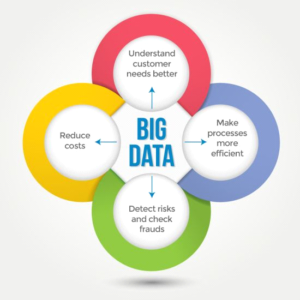Big Data is not an overly sized star trek character or endless storage, but is rather the new currency for IT organizations, that can be analyzed, queried and manipulated to provide a meaningful outcome to almost any analytical question.
And that currency has been paying off big dividends for those organizations with the need and the willingness to dive in. Here are some examples of how the Big Data and Analytics currency is being used today in business environments.
Insurance – Insurance companies have been using risk profiling applications and metrics for decades. A good example of a working model for this industry is credit checking. With the differing sources of data available today (Social, utility based, financial and others), predicting the possibility of credit default, sustainability or even risk profiling for life based insurance policies becomes an awful lot more accurate. Quotations for policies and also credit agreements can be made in minutes not days!
Health – Within the health industry the benefits are obvious. Analysis of healthcare-related Big Data can and does predict the outcome of disease progression, origination and ultimately the outcome of illness within any given subject (correct data supplied). Being fully automated, it eliminates doctor burn-out – working long hours, manually analyzing ever-increasing volumes of data. The increase in efficiency brought by analysis of Big Data will be the catalyst that will drive improved understanding and advancement in medicine like never before.
Retail – The retail market is another great example of using unstructured big data to increase revenue and profitability. Most large retailers understand that location-based data analytics can predict how much product is required per location, what volume of stock is consumed, and why. Not to mention potential future locations of stores based on historical trends and market demand analyses. There is very likely a strong correlation between retail success stories, and the ability of said retailers to leverage their own data effectively.
Of course these 3 examples are probably just some of the most obvious examples of Big Data analytics usage in business, however there are many more in play today. But with the sheer volume of data that’s required to be analyzed how do you do this securely and in a cost effective manner while performing this task……rapidly?
Where Big Data becomes Huge Data at scale
The term Big Data was coined by John Mashey in the 1990s, when the world contained less than 50 exabytes of data. Today, the world contains more than 20 zetabytes of data. The growth in data is so extreme, that using the same terminology somehow minimizes it. So maybe that means that Big Data now must called Huge Data. And naming conventions aside, it will require huge compute power to manage.

You might think that you just have to buy enough hardware, or just leverage a service that does most of this for you. However, you need to think about security when giving access to your currency – a third party may not be the answer.
However, if you are fortunate enough to have a highly resilient, secure and scalable technology within your technical estate now, shouldn’t you use it? If you’re running a mainframe data center, then already you have it – mainframe technology is an ideal candidate to fulfil these needs, and you have already made that investment.
Mainframe technology has evolved over the past few decades to become the defacto universal high-performance computing platform that has adapted to the changes and pace of today’s technical advancements. Faster, more resilient, more powerful, Open Source ready, highly secure and completely scalable – it is a phenomenal piece of tech that’s not only passed the test of time, but adapted extremely well to today’s digital transformation revolution.
Worked continuously in the Financial Services Industry (primarily on the IT side) for over thirty years.
During this time has worked first-hand on major Industry Initiatives both in the U.K. and in the USA – such as TALISMAN, TAURUS, CREST, (the Bank of England’s) CGO, Counterparty/Client/Settlement Risk Reporting, CHAPS, Model A and B type Clearing, Intra-Day Payment Netting, Capital Gains Tax Reporting, Regulatory Reporting, Trading Interfaces (from DOT through to FIX API’s and beyond), Multi-Instrument and Multi-Currency systems, Direct Market Access and Custodian Services.
In short, I have been pretty much continuously involved with various types of FinTech for the longest time.



